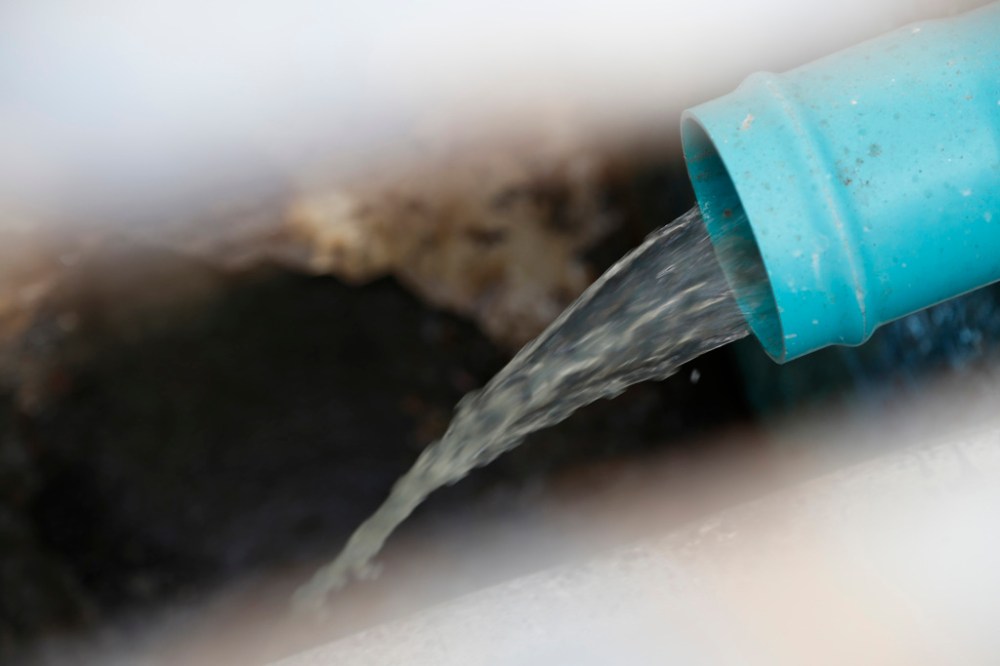Winnipeg wastewater signals ‘COVID-19 has not gone away yet’
Advertisement
Read this article for free:
or
Already have an account? Log in here »
To continue reading, please subscribe:
Monthly Digital Subscription
$0 for the first 4 weeks*
- Enjoy unlimited reading on winnipegfreepress.com
- Read the E-Edition, our digital replica newspaper
- Access News Break, our award-winning app
- Play interactive puzzles
*No charge for 4 weeks then price increases to the regular rate of $19.00 plus GST every four weeks. Offer available to new and qualified returning subscribers only. Cancel any time.
Monthly Digital Subscription
$4.75/week*
- Enjoy unlimited reading on winnipegfreepress.com
- Read the E-Edition, our digital replica newspaper
- Access News Break, our award-winning app
- Play interactive puzzles
*Billed as $19 plus GST every four weeks. Cancel any time.
To continue reading, please subscribe:
Add Free Press access to your Brandon Sun subscription for only an additional
$1 for the first 4 weeks*
*Your next subscription payment will increase by $1.00 and you will be charged $16.99 plus GST for four weeks. After four weeks, your payment will increase to $23.99 plus GST every four weeks.
Read unlimited articles for free today:
or
Already have an account? Log in here »
Hey there, time traveller!
This article was published 28/03/2022 (1354 days ago), so information in it may no longer be current.
Traces of COVID-19 found in wastewater taken from two of three Winnipeg sewage treatment plants appear to be levelling off but remain at heights at least one expert says call for caution.
On Monday, the National Collaborating Centre for Infectious Diseases published updated wastewater monitoring data for Winnipeg.
The surveillance is conducted by the Public Health Agency of Canada and scientists at the National Microbiology Laboratory and examines viral remnants in wastewater collected from the north, west, and south end water treatment plants.

People infected with the virus that causes COVID-19 can shed it in their stool. By monitoring virus levels in wastewater, public health can see early indications of increased spread or declines in transmission of the virus.
Based on the latest graphs produced by PHAC, viral levels were following a clear downward trend in samples taken at the north end control centre as of March 17, said University of Saskatchewan epidemiologist Nazeem Muhajarine, a community health professor based in Saskatoon.
Samples from treatment centres in the south and west ends appear to have stopped declining at a “moderate” level in early March, comparable to the tail end of the Alpha variant wave last spring.
On March 1, the Manitoba government lifted proof of vaccination requirements for indoor settings. On March 15, all remaining public health measures, including a requirement for masks in indoor public places, were lifted.
Wastewater monitoring indicates Omicron continues to be found in the greatest proportion among Winnipeggers. However, less than 20 per cent of viral samples found in wastewater are coming back as the more severe Delta variant.
“COVID-19 has not gone away yet,” Muhajarine said. “It is very much with us, and it is actually in significant numbers. It is not in numbers that we can totally relax.
“We still should be very careful in terms of exposing ourselves to picking up COVID-19.”
Unlike other jurisdictions, surveillance data for Winnipeg is not presented in a model that would estimate the number of cases in a community based on how much virus is in the wastewater.
The data can still be used to compare current viral loads to past peaks and to keep tabs on the speed of COVID-19 spread, Muhajarine said.
Manitobans should continue to take pandemic precautions based on the virus levels seen at the south and west end sample sites, noting experts still do not know the longer-term consequences of COVID-19, Muhajarine said.
“This is a pandemic that has a long shadow and it’s an acute infectious disease that has a chronic manifestation,” he said. “We are just still learning in Canada and elsewhere what this chronic manifestation is going to look like and how to deal with that.”
On Monday, Manitoba’s top doctors declined to provide an interview on the latest wastewater data.
In a statement to the Free Press, deputy chief provincial public health officer Dr. Jazz Atwal said there could be a variety of reasons for the fluctuations to occur from one treatment plant to another.
“In general, we are seeing ongoing activity in Winnipeg with a generalized downward trend in activity,” Atwal said.
danielle.dasilva@freepress.mb.ca

